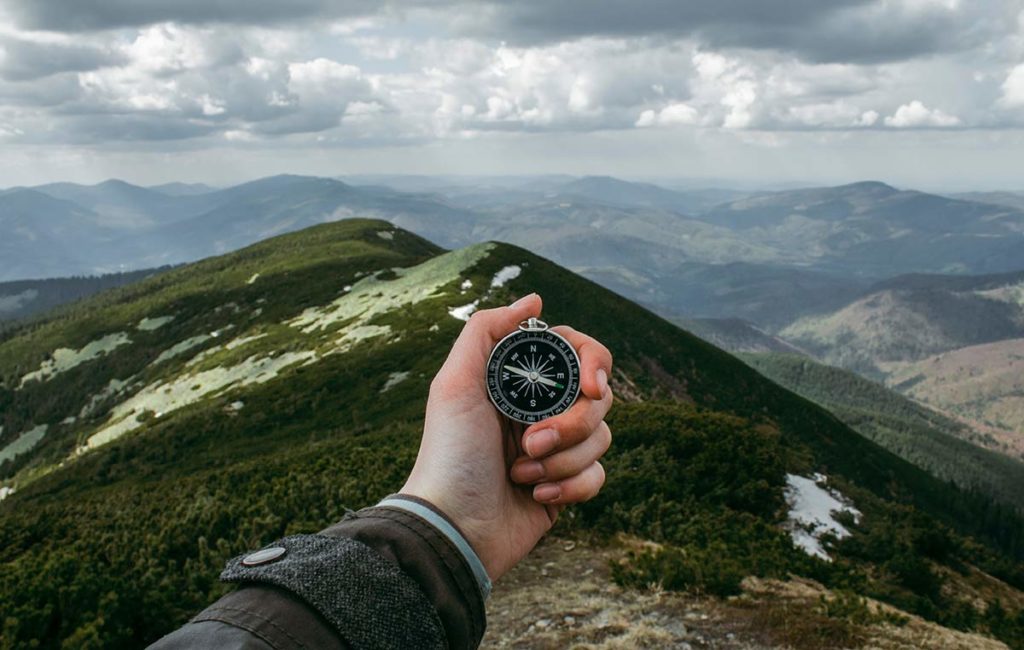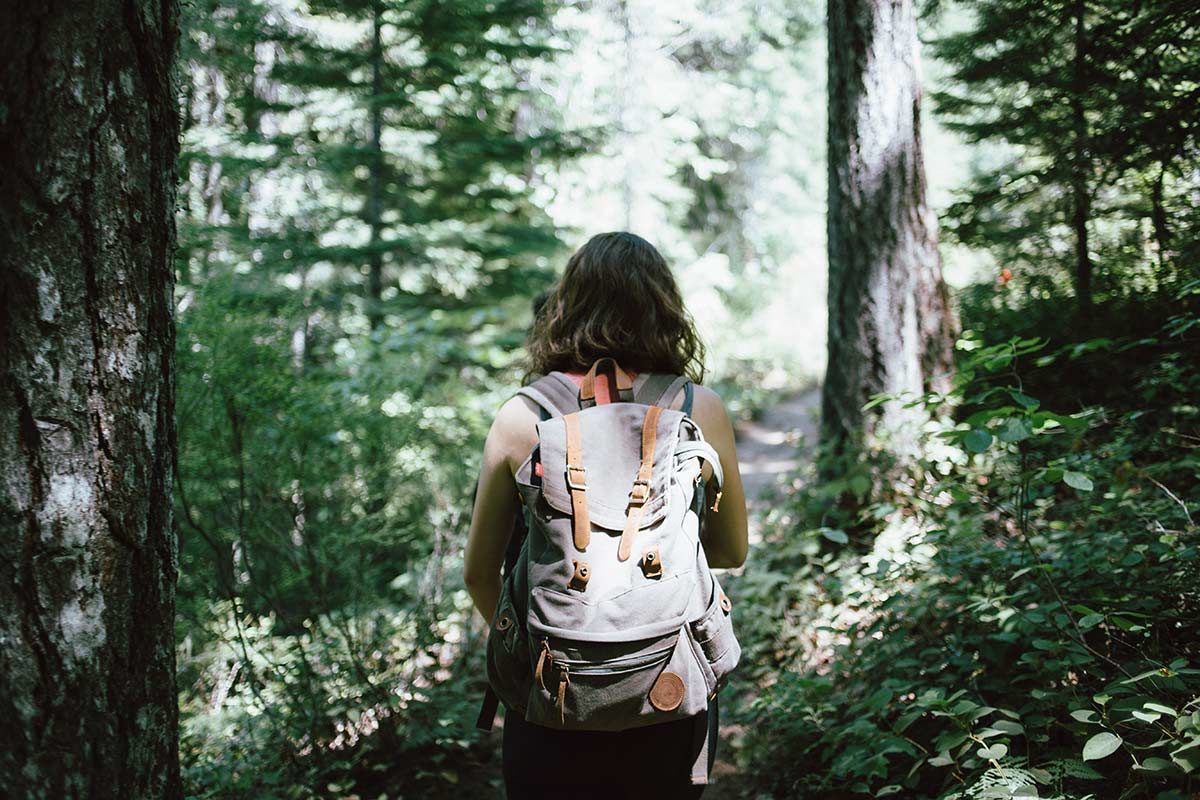Essential safety tips, some practical advice and the best Irish hiking routes for solo trekkers.
Humans are sociable creatures. We like to hunt and play in packs. We also like to hike in groups or in couples for the camaraderie and the craic. But sometimes you want to hike alone. Sometimes no one is free to join you but the urge to be outdoors is strong and dictates that going solo is the only option. Then there are times when you want to feel the wind in your hair, the trail under your feet and the open road ahead of you totally alone. Trekking solo is the marmite of the hiking community. It is absolutely loved by some and completely loathed by others. There are genuine (and imagined) fears which need to be considered by the lone hiker and there are also genuine (no imagined) pluses to journeying on the solitary trail.
Safety first
There are always safety concerns for the intrepid traveller heading out to hike the wilderness. Falling down, becoming ill, being injured or attacked by wild beasts are possibilities that every hiker should prepare for before every outdoor adventure. These concerns are heightened when facing the trails on your own. Good preparation can lessen the likelihood of any or all of these mishaps and make certain that a plan is in place in the unlikely event that something untoward happens.
Backup Tell someone where you are going. Sounds simple and that’s because it is. Let a reliable person know what time you are starting the hike, the route which you plan to take and your estimated return time. Don’t forget to let them know when you are home again, otherwise you could face the embarrassment of sparking a rescue mission while you snore soundly, safe in your own bed.
Getting Lost Yup, this is a possibility, but one that you can avoid by choosing to travel on well-known and properly marked routes and then sticking to them. Don’t be tempted to go off the beaten path. This is no time to go all Bear Grylls and start exploring the unknown. If you have a bad sense of direction, pay extra attention to which itinerary that you choose. A trail you have enjoyed previously might be the best option, but a well-worn path is certainly sensible. Bring your phone and a power-pack but don’t rely on them totally. A GPS positioning system is useful but you should pack a map and compass. Know your physical limits and don’t attempt to do too much, as this could exhaust you and cause disorientation. If you do get lost just STOP (stop, think, observe and plan). The chances are you are not very far from civilization and some quiet reflection and a good look around will get you back on track in no time.
Animals
Thankfully in Ireland, the likelihood of an attack by wilder-beasts, tigers or bears is a very unlikely occurrence. However, you should be cautious and respectful of cows with calves, sheep with lambs and the default moody moods of rams and bulls. Let cows and sheep know you are approaching (humming or singing will suffice) and try not to walk through a herd, but skirt around them calmly and without panic. Sheep generally run from you. In fairness, by sticking to the trail it is likely that the only wild critters you see are shy foxes, hares, rabbits and the beautiful birds that our Island is famed. You are far more scary than anything you will meet on the trail. Which leads nicely on to the next word of caution…
Humans
This is the one warning that other people will love to impart when you plan to trek solo. There are some weirdos in the world, for certain. The closer to populated areas you hike, the more probable it is that you’ll encounter a weirdo. Be friendly but not outgoing to people you meet. Give the impression that your hiking partner should be along soon. Pepper spray might be something to take with you if you feel vulnerable with strangers. In general, those of us who hike alone on a regular basis, have pleasant encounters with other people. Short, pleasant encounters. If you fear that you being attacked on the trail is a possibility then you should choose the more well-trodden paths and weekend hikes, where there are more people around. If you are really worried and fearful, then solo hiking might not be for you. Join a walking group or a local hiking club and be certain of always having company on the road.
Be Prepared

Gear – It is important to be more prepared than unusual. If you have forgotten something, there is no one else to borrow it from! Ensure your phone is fully charged. Bring a Power pack, The GPS and more than just this, bring a map, compass, whistle and a torch (head torches are best). Clothes suitable for the weather (raingear, base layer, sun hat etc.) A change of socks. High protein snacks. Water purification tablets and/or plenty of water. A good first aid kit and chocolate. You will always need chocolate! Check out our blog on what you will need for hiking
Know the route If you are trekking a route that is new to you, then check it out thoroughly first. If possible view it on Google and identify any problem areas (rivers to cross etc.). Read the reviews from other hikers. Then let someone sensible and reliable know where you will be and when. Decide on a sensible return time and let them know if you are going to be late. ht All Trails is a great app that shows the route, pictures, reviews and good info that could be useful for researching the route.
The solitude of the mindful walker
Walking as a form of mindfulness or as a meditative practice is increasingly popular. Many enthusiasts are choosing to spend time trekking in nature as a contemplative and restorative thing to do. They say that the solitude and the quiet recalibrates the system and brings the ‘headspace’ which a lot of people crave. Zen backpacking. Walking at your own pace, in the best company possible. Your own! There is no unscheduled stopping at the behest of the group or one person in the group. Similarly you can take a break whenever you like without upsetting anyone. For those who like rambling on their own it is an amazingly rewarding experience. On the flip side of this joy, there are those who find it a thoroughly lonely experience. For them, facing the trail alone is akin to abandonment and loss. Loneliness abounds. Solo trekking is just not for everyone. One famous blogger bemoaned that there was no one to take her photograph and to converse about the views as she went. For those who need photographic evidence, a selfie stick will solve the first issue and there is really nothing wrong with talking to yourself in the wilderness and rapidly becoming one of the ‘weirdos’ other hikers fear.
Hiking solo can be rewarding, rejuvenating and a truly positive adventure as long as you know your own limits, prepare in advance and value the solitude that awaits.
A few of the best Routes in Ireland
The time of year, the weather forecast, your ability and fitness level and the time you have allotted for the expedition will all influence the choice of route for the sole hiker. Ireland has a wonderful variety of hikes, looped walks and marked trails for all hiking enthusiasts. Here are a few of the top one day hikes suitable for those who like to walk alone.
Crone Woods – Maulin Mountain Loop Wicklow

A Coillte route of some 6 kilometres, with a few tough parts, but fairly moderate skill needed. Its proximity to Dublin is likely to mean that it is a fairly busy trail most weekends. There are amazing views out to the coastline and over the Powerscourt waterfall. It’s a gravel trail all the way and has the added advantage of being a loop walk.
Errigal Mountain Donegal
Standing 751 meters high, Errigal is one of Ireland’s most iconic and beautiful mountains. The tallest mountain in the Derryveagh range, it is situated in the Gaelteacht area of Gweedore and dominates the landscape. The trail takes about three hours, including the walk from the car park and the climb itself. Follow the well walked path alongside the stream, and up a clearly visible track rising through the white silvery scree on the lower slopes of the mountain. The summit has two peaks and while the first is the highest and the real summit, the beaten path will lead you to the second short crossing to the second peak and reward you with awesome views. It is not easy to get lost on Errigal and it’s a popular climb so it is perfect for the solo trekker.
Hares Gap. Co Down
Where the mountains of Mourne sweep down to the sea. Stunning trail across the mountains. Well sign posted and not too far away from the maddening crowd. This is a four to Five hour trek, just two miles out and back with some steep terrain.
Bantry Coorycommane Loop. Cork
A beautiful hike that offers a range of terrain. Forestry, bog road, country roads over straight and hilly ground. It can be quite steep in parts and will take a good two hours to complete. Fantastic views over the Coomhoola Borin Vally, Bantry Bay and Whiddy Island and right down to the Beara Peninsular. Way marked and looped, this hike offers an off the beaten track experience without actually being too far from civilisation.
Find a mountaineering group near you
https://www.mountaineering.ie/localclub/ or https://www.mountaineering.ie/membersandclubs/registration/ if you join as a member. They offer accredited mountain training skills workshops and courses that are very useful for solo hikers.

